 |
Course 24: Helping Children with ADD Succeed in School-Age Programs |
2.00 |
Children with ADD regularly experience struggles and challenges at home, in school, and in the community. Without the help of knowledgeable, understanding, and supportive people, they often experience multiple failures and frustrations on a daily basis. Typically, they lack the self-confidence that stems from learning how to do things well. Their lack of social skills and self-control makes it hard for them to make friends with schoolmates and children they meet in program activities. By the school-age years, many of these children do not feel good about themselves. They feel lonely and ostracized. Their self-esteem sinks a little lower every day.
Staff in school-age programs are in a position to make a positive difference in the lives of children with ADD. Armed with important information and management tools, they can help reverse the cycle of failure and frustration that results in low self-esteem in these children. They can make life easier, happier, and more satisfying for children with ADD, their parents, other children in the program, and themselves.
IMPORTANT NOTE: ADD stands for Attention Deficit disorder. Many professionals refer to this disorder as ADHD, which stands for Attention Deficit Hyperactivity Disorder. Some professionals use these terms simultaneously or interchangeably. In this module, the term ADD is used to refer to the basic form of the disorder and recognizes that the basic pattern of inattention associated with ADD often includes the component of hyperactivity related to extremes in temperament.
|
 |
Course 23: Providing Homework Support |
2.00 |
The National Standard Objectives of Learning (SOL) have raised questions about the role of school-age programs in providing homework help and support. Research indicates there are many different ways to provide effective homework support in school-age programs. Some are more structured than others. When planning a homework support program, it is important for school-age programs to develop a homework philosophy that is consistent with the program’s overall philosophy and reflects current research on best practices for providing homework help. The homework philosophy should also reflect the needs of parents and children in the program and strike a balance between homework needs and other experiences that help children grow and learn out-of-school. When staff know how to design homework environments, identify appropriate homework materials, and use effective strategies to guide children’s efforts, homework support can be an effective component of ongoing programs. |
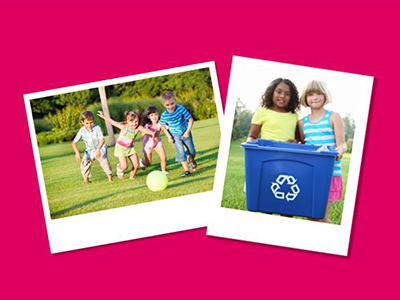 |
Course 22: Developing Activities That Support Character Development and Promote Social Interaction |
2.00 |
In order to operate an effective school-age program environment, it is essential for staff to know how to design, set up, and operate a variety of different interest areas that meet the developmental needs of school-age children. Effective interest areas are multi-dimensional; they provide a wide variety of activity options within the area. Effective interest areas provide children with opportunities to work and play independently on their own or with others. They also provide a setting for focused, staff-led activities designed to introduce children to new concepts and skills. Staff in quality school-age programs know how to work with colleagues and children to define, develop, and manage a wide variety of interest areas. |
 |
Course 21: Creating Successful Clubs, Special Events, and Field Trips in School-Age Programs |
2.00 |
Children who regularly attend school-age programs need many opportunities to participate in activities that help them connect with their communities and work together to build on their interests, talents, and abilities. Clubs, special events, and field trips are ideal vehicles for providing these opportunities. When staff know how to work with children to plan and implement these activities, children develop a sense of program ownership that helps them become productively engaged in a variety of meaningful activities that support their development. |
 |
Course 20: Developing Activities That Encourage Creativity and Cognitive Development |
2.00 |
Children who regularly attend school-age programs need many opportunities to engage in activities that will help them develop their creative potential and apply their emerging thinking abilities and skills. To support children’s needs, it is essential for school-age staff to understand the creative process and the relationship of cognitive development to creativity. With this knowledge and understanding, staff can design and implement a program that encourages a sense of wonder as children explore their environment, fosters creative imagination, and enhances children’s ability to apply reasoning skills appropriately as they develop ideas and encounter challenges, problems, and opportunities. |
 |
Course 19: Involving School-Age Children in Activity Planning and Implementation |
2.00 |
As they grow and change and move toward independence, school-age children and youth become very interested in planning and directing their own activities. This means it’s very important for staff to think of ways to involve them in program planning and implementation. By planning activities WITH children instead of FOR them and engaging them in creating the program environment, staff can help children develop a feeling of ownership of the program – a positive feeling that the program belongs to them. |
 |
Course 18: Exploring Effective Schedules, Diverse Activity Formats, Planning Tools, and Staff Roles |
2.00 |
Flexible schedules make it possible to provide a varied program of activities that support the developmental needs and interests of school-age children. By establishing a flexible schedule, school-age staff can plan and implement a variety of different activity formats. To develop a balanced program, it is important for school-age staff to take a systematic approach to both short-term and long-range planning. Staff can use a variety of different planning tools to plan different types of activities. To implement a diverse program of activities, it is essential for school-age staff to recognize and use a wide variety of different roles as they interact with children throughout the program day.
|
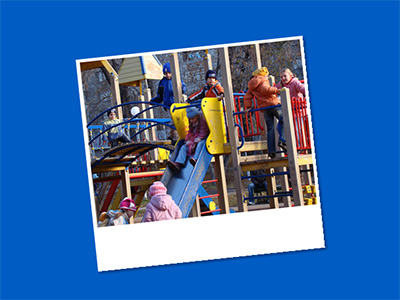 |
Course 17: Developing and Implementing Effective School-Age Outdoor Environments and Interest Areas |
2.00 |
School-age children need daily opportunities to exercise, relax, and participate in a wide range of outdoor activities. The hours children spend in after school programs are often the best hours of the day for getting fresh air and enjoying the out of doors while it is still daylight. School-age programs can provide safe, secure settings where children can enjoy the out of doors. Even if outdoor space is limited, regular participation in a wide variety of physical activities in the open air can help children develop healthy exercise habits that will last a lifetime. |
 |
Course 16: Developing and Implementing Effective Indoor Interest Areas |
2.00 |
In order to operate an effective school-age program environment, it is essential for staff to know how to design, set up, and operate a variety of different interest areas that meet the developmental needs of school-age children. Effective interest areas are multi-dimensional; they provide a wide variety of activity options within the area. Effective interest areas provide children with opportunities to work and play independently on their own or with others. They also provide a setting for focused, staff-led activities designed to introduce children to new concepts and skills. Staff in quality school-age programs know how to work with colleagues and children to define, develop, and manage a wide variety of interest areas |
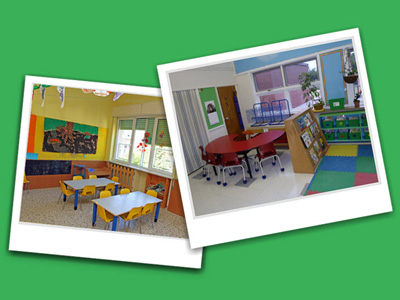 |
Course 15: Designing Effective Indoor School-Age Play and Learning Environments |
2.00 |
Planning effective environments is the first step to planning an effective program. When environments are attractive, interesting, and comfortable, they provide a backdrop for a varied program that can address the developmental needs of school-age children. The look and feel of well-planned environments send messages that let children know they are welcome and valued. They are inviting and encourage children to get involved and stay engaged with program activities and experiences |
 |
Course 14: Creating and Maintaining Healthy School-Age Environments |
2.00 |
Keeping school-age children healthy is another major priority for school-age programs. This requires giving careful attention to setting up the environment in a way that promotes healthy habits and using effective strategies for monitoring and maintaining a hygienic environment. Because school-age children are growing towards independence, it is also important to help them develop habits and behaviors for living a healthy life-style.
|
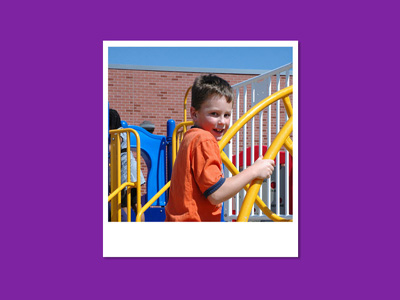 |
Course 13: Creating and Maintaining Safe School-Age Environments |
2.00 |
Keeping school-age children safe during out-of-school hours is a top priority for school-age programs. This requires giving careful attention to setting up the program environment in a way that promotes safety and using effective strategies for monitoring and maintaining a safe environment. Because school-age children are growing towards independence, it is also important for staff to help them develop habits and behaviors that will keep them safe from harm as they participate in program experiences. Promoting and protecting children’s safety is one of the major responsibilities of staff in school-age programs. |
 |
Course 12: Growing as a Professional in School-Age Programs |
2.00 |
Caring for school-age children in a school-age program is a relatively new field of work. The field itself is constantly changing and expanding. In view of this "newness" and change, those who work in the field are playing an important role in shaping and defining what it means to be a school-age professional. They are guiding school-age care as an emerging profession.
In the search for a definition of professionalism in school-age programs, it is helpful to examine the common characteristics of professionalism in other fields. The next step is identifying qualities and characteristics associated with professional behavior in the school-age field, itself. As a school-age professional, it is also important to understand the importance of acting as a public policy advocate on behalf of school-age children and their families.
An important part of professionalism is continued personal growth and development in relation to the field. This requires using appropriate resources and strategies to further individual professional development. It also requires considering what constitutes ethical conduct in the field and developing an ongoing commitment to ethical behavior. |
 |
Course 11: Building Relationships with School Personnel |
2.00 |
School-age programs and schools share a mutual goal of supporting the growth, development, and learning of school-age children. Over 50% of all school-age programs nation-wide are housed in school facilities. When school-age programs are housed in school facilities, it is essential for staff in school-age programs to establish and maintain a positive relationship with school personnel. This makes it possible for schools and programs to work together to support the needs of the whole child. Staff can develop successful partnerships with school personnel by cultivating an understanding of the needs, interests, and goals of school personnel and using effective strategies, tools, and systems to build a spirit of positive collaboration and communication. |
 |
Course 10: School-Age Care as a Family Service – Part Two |
2.00 |
The foundation for getting parents involved in school-age programs is to keep parents well informed about what is happening in the program. Quality programs also provide parents with opportunities to make suggestions and give feedback on program services through suggestion boxes, feedback forms, and surveys. When parents are encouraged to have input in the program, they develop trust and confidence in the program and feel a sense of pride and ownership. They are much more likely to participate as resourceful partners with program staff when they know their ideas are welcome and valued. Finally, because parents are all different from each other, it’s important to provide many different opportunities for them to connect with the program. Staff in quality school-age programs recognize that all parents don’t have to be involved in the same way. |
 |
Course 09: School-Age Care as a Family Service - Part One |
2.00 |
Strong, positive, cooperative relationships with parents and families are at the heart of quality school-age programs. Unfortunately, positive relationships with parents and families are not always easy to achieve because parents, like children, have widely varying personalities; some are easier to reach than others. Parents in school-age programs have different ideas, values, concerns, knowledge, pressures, lifestyles, plans, dreams, resources, and constraints. Staff who are successful in building positive relationships begin by recognizing the importance of accepting parents as the most important people in children’s lives, regardless of differences among them. They understand that staff attitudes toward parents can have a strong effect on whether or not staff can establish positive relationships with parents. Staff in quality programs make a commitment to learning as much as possible about parents’ needs, interests, wants, and concerns and develop effective strategies for making positive connections with parents. |
 |
Course 08: Human Relations Skill Development |
2.00 |
Being able to communicate effectively is an essential human relations skill for school-age care professionals. To be a good communicator, school-age professionals need to understand the components of communication and how the communication process works. They need to identify barriers to clear communication and develop strategies for minimizing or eliminating barriers to communication. School-age care professionals also need to work cooperatively with other team members to solve problems and conflicts. This requires an understanding of how teams work and the characteristics of effective teams. Assessing the current status of personal human relations skills helps each professional identify priorities for making improvements to these skills. |
 |
Course 07: Observation Skills - What's Going on Here? |
2.00 |
Observation forms the basis for much of what people plan and do every day. As staff work with children in school-age programs, observation takes a more formal role. High quality school-age care is based on the principle of developmentally appropriate practices. Developmentally appropriate practices combine general knowledge of child development with specific knowledge of each individual child. Conducting objective observations help staff learn about each child’s development and provides staff with valuable information to use in planning and implementing appropriate program experiences and in developing effective guidance strategies. |
 |
Course 06: Guiding the Behavior of Individual Children |
2.00 |
The knowledge and understanding in this course will help students develop strategies for creating programs that encourage individual children to develop self-discipline and self-direction, establish positive relationships with others, and exhibit respect for program materials and equipment and the rights of others. |
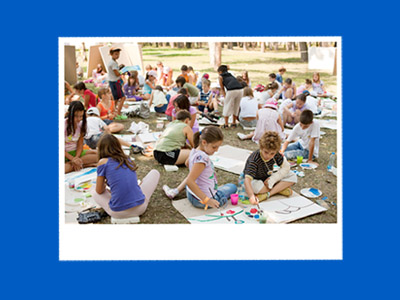 |
Course 05: Guiding School-Age Children in Groups |
2.00 |
When large numbers of children are involved in the program, it is challenging to create and deliver school-age program activities that can meet the needs of all children. The key to success is taking a systematic approach to program planning. It is important for staff to understand how to select appropriate activity options and use effective management strategies that make it possible to offer a balanced variety of simultaneous activity options. This understanding will help staff plan and implement a program that effectively supports, nurtures, and guides individual differences and fosters positive interaction among children in groups. |
 |
Course 04: Exploring Individual Differences in School-Age Children |
2.00 |
One of the most significant challenges for staff in OST programs is learning how to identify, manage, and respond appropriately to individual differences in a group setting. Some differences among children are the result of inborn characteristics and traits (e.g. physical characteristics, temperament, talents, race). Other differences are the result of external factors (e.g. the environment) or are cultivated as the child grows and develops (e.g. interests, skills, knowledge). The diverse needs, characteristics, interests, abilities, and skills of school-age children require a flexible atmosphere that supports diversity and choice for children with varying capacities for independent action. Staff who understand and appreciate individual differences in children are better equipped to plan and implement program experiences that help individual children grow and flourish in a group setting. |
 |
Course 03: Exploring Developmental Needs and Characteristics of Different Age Groups |
2.00 |
Certain developmental needs and traits are associated with younger school-age children, while others are typical of older school-age children and youth. While the differences between school-age children of different ages are not clear-cut, there are some general traits and tasks that are often associated with younger (ages 5 – 7), middle (ages 8 – 10), and older (ages 11 – 12) school-age children and youth. Understanding these differences helps staff plan appropriate activities and guidance strategies for children of different ages. |
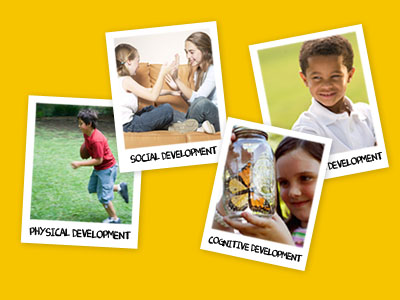 |
Course 02: Exploring Four Areas of School-Age Development |
2.00 |
One of the most helpful ways to gain an understanding of the needs and interests of youth between 5 and 12 is to examine their development from four different perspectives: 1) Physical Development, 2) Cognitive Development, 3) Social Development, and 4) Emotional Development. It is important for staff to keep all four of these areas in mind when planning and implementing program activities and experiences. Keeping the four areas of development in mind leads staff to design a balanced set of experiences that nurture and growth and development of the “whole child.” |
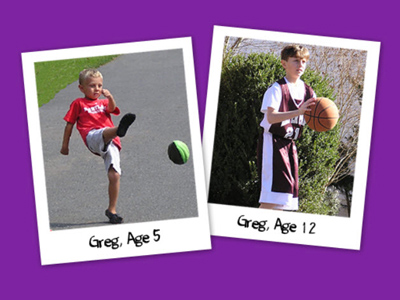 |
Course 01: Exploring the Continuum of Developmental Tasks of School-Age Children from 5 to 12 |
2.00 |
Understanding the continuum of ongoing development between the ages of 5 and 12 provides the foundation for planning and implementing successful school-age programs. When staff know and understand the developmental tasks of school-age children, they can work with children and colleagues to design effective environments, plan engaging activities, set appropriate expectations and limits, and guide children’s behavior effectively. |
 |
Correcting Performance Problems: Providing Feedback To Employees (Instructor Guide) |
0.84 |
By addressing employees who have performance problems, you can help them make positive changes, encourage career advancement, and promote personal and professional growth. Addressing an employee involves providing the feedback necessary to improve performance.
In this course you will learn to: prepare to conduct a feedback session in which you encourage communication with the employee, and conduct a constructive feedback session with an employee who has a performance problem.
This Instructor's Edition of this course includes notes and suggestions to assist you in presenting the material, whether in an in-person classroom setting, or as an instructor-led online or distance-learning course. It also provides you with the answers to questions found in mid-lesson activities, as well as in the quiz that concludes the course. |
























